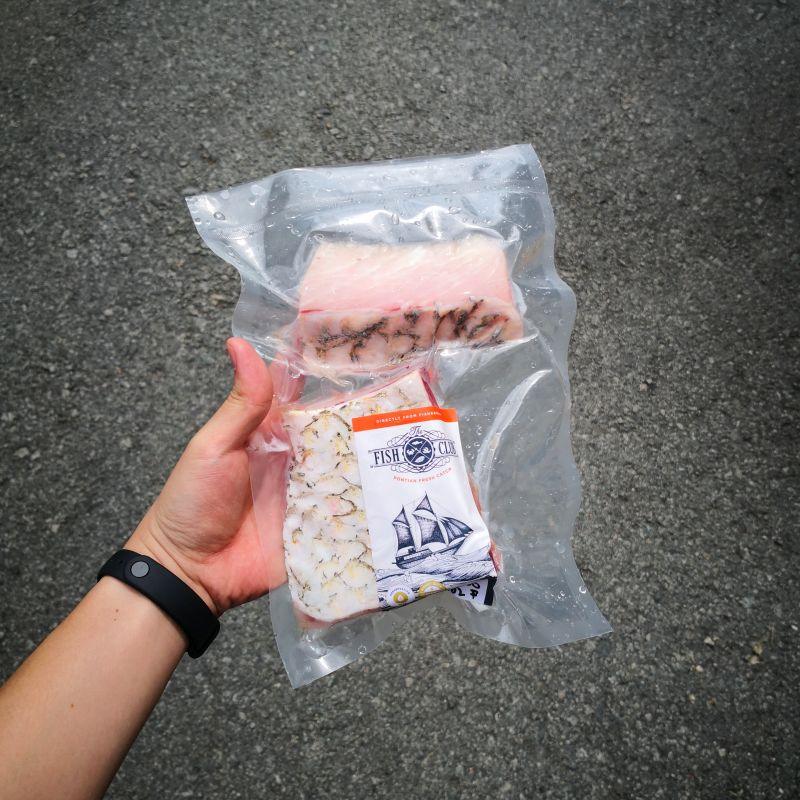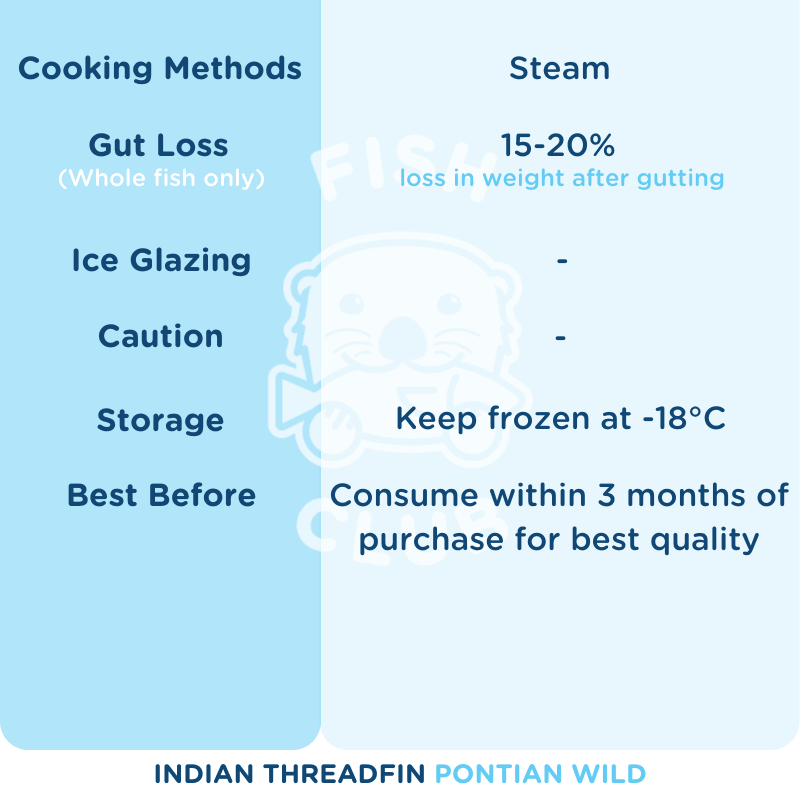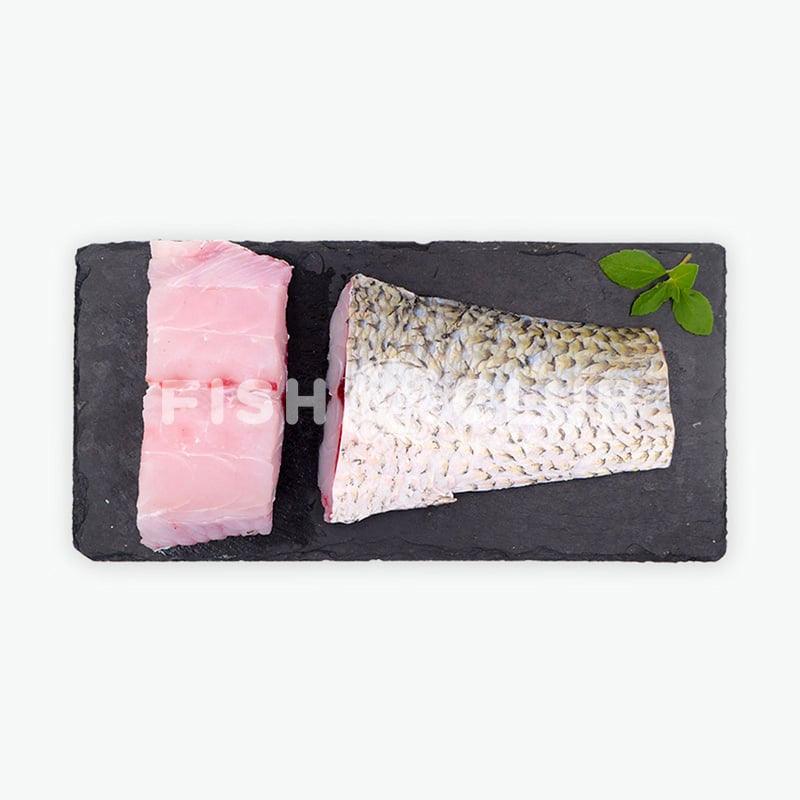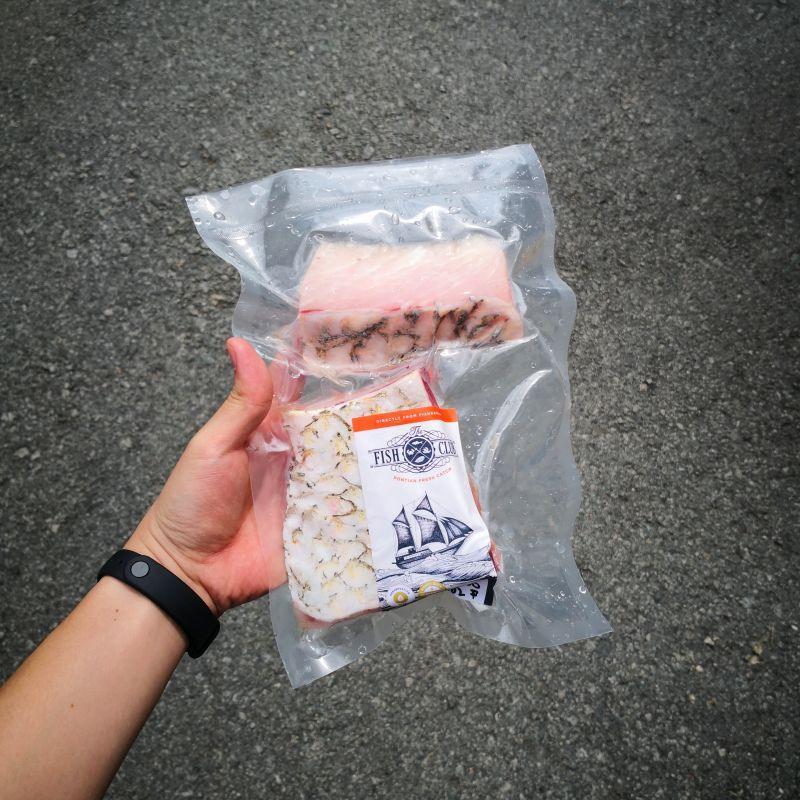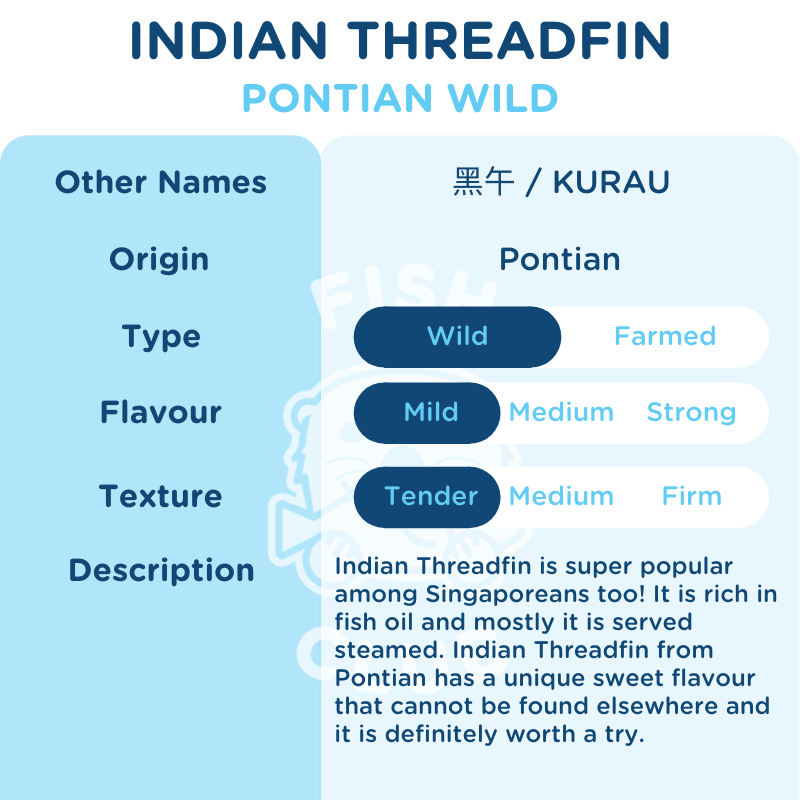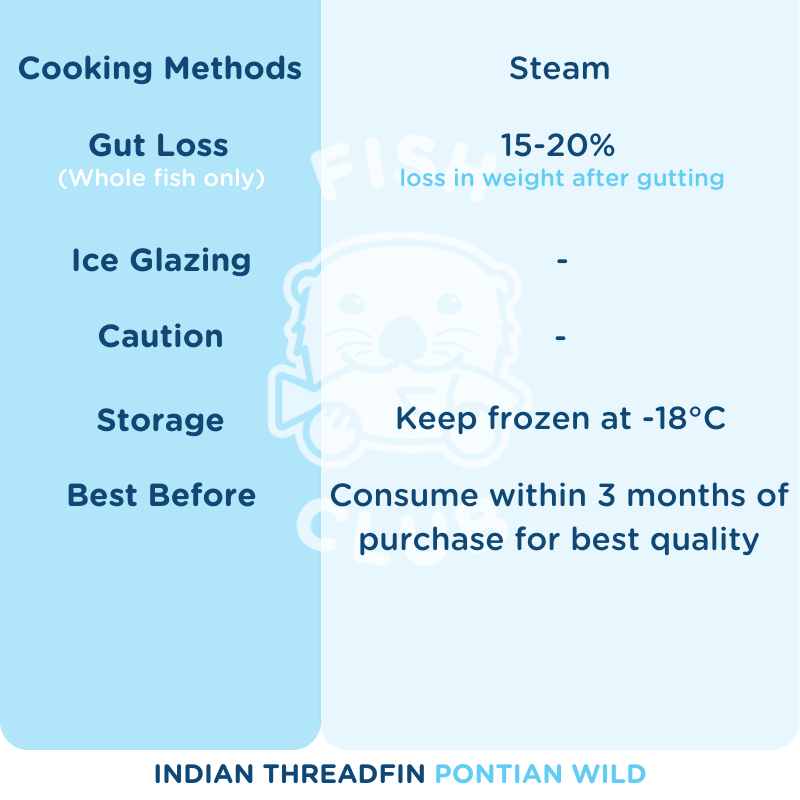Fish Club
Indian Threadfin (Pontian Wild) Fillet / 黑午(笨珍野生)厚片 ***
Indian Threadfin (Pontian Wild) Fillet / 黑午(笨珍野生)厚片 ***
SKU:KUR-F-200
Origin: Pontian
15 in stock
Couldn't load pickup availability
Indian Threadfin / 黑午
Indian Threadfin is known as the “Fish King” in Pontian, it is super popular among Singaporeans too! It is rich in fish oil and the price is always high in the market. It is mild in flavour, tender in texture and it is mostly served steamed. Indian Threadfin from Pontian has a unique sweet flavour that cannot be found elsewhere and it is definitely worth a try. 黑午鱼是名副其实的笨珍“鱼王”,深受新加坡人喜爱。它含有丰富的鱼油,所以市场价格高。它味道清淡,肉质柔软,也因此常常用来清蒸。笨珍野生的黑午鱼有别于来自其他海域的黑午鱼,它的口味更加清甜,绝对值得你一试。
Chinese Name(s): 黑午 / 顺风
Local Name(s): Kurau
Origin: Pontian 笨珍
Type: Wild Caught 野生
Flavour: Mild 清淡
Texture: Tender 柔软
Cooking Method: Steam 蒸
Weight Loss after cleaning (whole fish): 15-20%
————————————————————————————————————
Premium Threadfin / 黑午(顺风) / Kurau
The indian threadfin is a highly priced fish in Pontian, with its flaky white texture, usually weighing around 5kg The easiest way to tell an Indian threadfin is the count the threadlike rays which are found just under the pectoral fins. There should be five in the Indian threadfin as compared to four with the “Peh Ngor” or four finger threadfin. These two varieties are the ones that are commonly seen at the market. The Indian fhreadfin is usually the bigger of the two although you do sometime see juvenile Indian threadfins on sale. The Hokkiens call the small threadfins ngor her soong which can refer to either the Indian or four finger threadfin, although it is more common to find small table sized four finger threadfin. 黑午鱼(顺风)Shun Hok,也称笨珍最贵的鱼,是笨珍较稀有的海鱼,比起一般的白午更来得难找。 肉质比一般白午来得鲜甜,鱼肉味更加香厚,是柔佛各地人经常竞争抢购的鱼种。 黑午的须有5条,比起白午的4条。
Additional Information:
Caution: Customized cutting is NOT available.注意:恕不接受客制化切割
Storage: Keep frozen at -18°C. For best quality, consume within 3 months.
储存方式:冷冻雪藏 -18°C。购买后3个月内食用,品质最佳。
✅ 100% Preservative Free 绝无防腐
✅ Cleaned & Gutted 去鳞清内脏
✅ Vacuum Packed 真空包装
✅ Flash Frozen 急速冷冻
How we package your order?
How we package your order?
The vacuum sealed seafood products and frozen chill packs, which contain non-toxic gel are packed in a polystyrene box, so the chill packs distribute the cold evenly throughout your fish and seafood, ensuring maximum freshness.
We seal the polystyrene box with packing tape and hand it to our cold chain logistic to deliver to you.
What should I do when my order arrives?
What should I do when my order arrives?
Remove your seafood products as soon as possible from the box, refrigerate all fresh items and freeze all frozen goods until you are ready to prepare them for consumption.
How is your frozen seafood handled? What is your freezing process?
How is your frozen seafood handled? What is your freezing process?
Our fish and shellfish are processed and immediately frozen in our -45°c blast freezer. No chemicals or preservatives are added during the freezing or production process on any of our seafood items.
What is a -45 Degree Freezer and how does it affect the seafood when defrosted?
What is a -45 Degree Freezer and how does it affect the seafood when defrosted?
Blast freezing seafood products at a lower temperature keeps the wall of the cell intact, ensuring that water from the inside does not exit. When defrosted, the quality, texture, and appearance will remain completely intact just as if it were a fresh product.
What is the proper way to defrost frozen seafood products?
What is the proper way to defrost frozen seafood products?
If you have received frozen seafood and placed it in the freezer, remove these items from the freezer and store them in the refrigerator for at least one day before you plan to serve it. Allow 12 to 24 hours for the product to properly defrost. Do not rush the defrosting process as it can affect the flavor and texture of your seafood.
Why are some seafood products unavailable from time-to-time?
Why are some seafood products unavailable from time-to-time?
The availability of seafood products depends upon the season, weather, and other conditions that can affect a catch or harvest. Additionally, the harvesting of many seafood products is regulated in order to maintain a sustainable supply.

